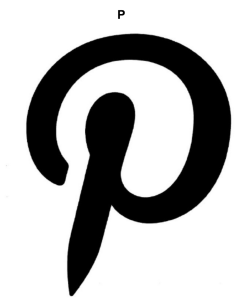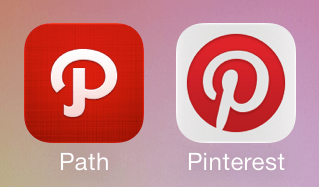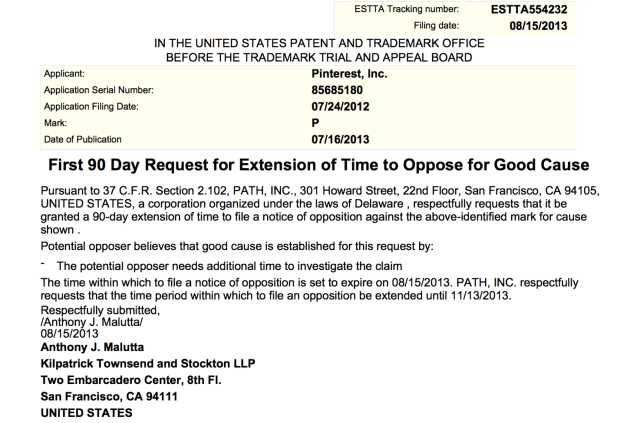Are the Path and Pinterest logos too similar? Path apparently thinks so. The mobile messaging startup is currently working to prevent Pinterest from acquiring the trademark to the letter “P” as a stylized design (like the one shown here, and below). The U.S. trademark office allowed Pinterest’s trademark registration on this proposed design mark, but recently Path asked for an extension in order to file an opposition.
It’s a bit too early in the process to see where this fight goes, but if Pinterest was granted the trademark to the “P,” it could then potentially prevent Path, and other apps, from using similar designs, explains patent attorney Lenny Kravets, who serves as Patent Counsel at InterDigital Communications.
 This is the kind of battle that happens all the time in the trademark world, as companies struggle to come up with logos that are unique and differentiated from their competitors and industry peers. However, this particular case is interesting because of the increasing similarities between the design styles of both the Pinterest and Path applications, which could contribute to so-called “consumer confusion” and make the trademark issue more significant.
This is the kind of battle that happens all the time in the trademark world, as companies struggle to come up with logos that are unique and differentiated from their competitors and industry peers. However, this particular case is interesting because of the increasing similarities between the design styles of both the Pinterest and Path applications, which could contribute to so-called “consumer confusion” and make the trademark issue more significant.
As you may recall, in July, Pinterest’s mobile application received a significant update to its design, which introduced a new interface and animations. The animations are very similar to those Path popularized – little, round circle icons that pop up when a user taps the screen directing the user to other actions that can then be taken.
In Path, users tap the plus “+” button at the bottom of the screen to pop up a series of post types they can make, like “photo,” “music,” “location,” and more. But in Pinterest, the animations only appear when a user presses and holds on a shared pin. Then, you would have to slide your finger over to the action you want to take, like “favorite,” email, or re-pin, for example. (Pinterest, we should note, isn’t the only one to adopt this design style in recent months – Tumblr too introduced a similarly inspired interface earlier this year.)
But the fact that Pinterest adopted a design style that Path had already introduced can help to make the case against Pinterest gaining rights to this trademark. Before the Trademark Office registers a mark, they first examine the mark against prior registrations, and check for a number of factors, including whether the mark could confuse the public, or is deceptive, among many other things.
Explains Matthew Mitchell, patent attorney at Mitchell Law PLLC, the trademark office publishes the registration, allowing the public – individuals or companies – to file an opposition. Objectors can also request an extension up to 30 days – which is what the document (see below) references. Path is asking for an extension, which typically allows an attorney the time to draft the objection, laying out the merits of why a mark should or should not be registered.
If Path is able to successfully make its case, that wouldn’t mean it could stop Pinterest from continuing to use its logo, however. “If Path wanted to stop Pinterest from using the logo, they’d have to basically make the case that Path has a trademark to the “P,” and that Pinterest is infringing on it,” says Kravets.
Instead, Path is looking here to only stop Pinterest from gaining the design trademark, which it could then use against Path and others if it chose.
We reached out to representatives at Path and Pinterest, and will update if they choose to comment.

